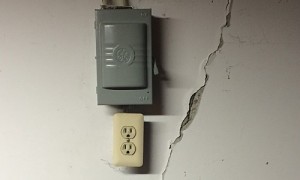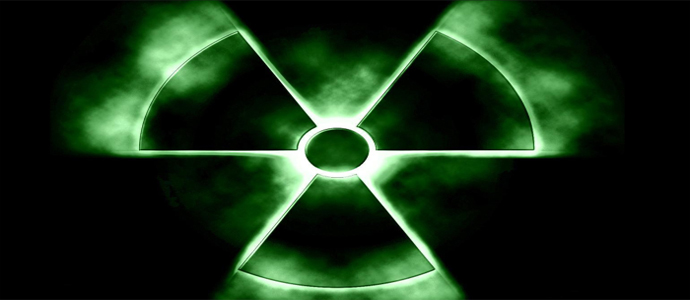What is Radon?
It is a naturally occurring, colorless, odorless, tasteless, and chemically inert radioactive gas. Radon is formed by the natural radioactive decay of uranium in rock, soil, and water.
How Does the Gas Enter My Home?
Every home has its own unique pressurization signature that is created when the heating, ventilation, plumbing, and drainage systems work together. This pressure is typically less than that of the soil around your home’s foundation. This difference in pressure acts like a vacuum and pulls the majority of the gas into the home through cracks in the foundation and other openings. Other lower risk points of entry can include well water and certain building materials, including granite and concrete products. It can be found in both new construction as well as older homes.
Should I be Concerned?
Radon has been identified as the second leading cause of lung cancer in the United States. It is responsible for tens of thousands of deaths every year, nearly as many as those that result from drunk driving. It is important to note that this threat is completely preventable through adequate testing and remediation.
How Do I Assess My Risk?

Image Source: Flickr/Birdies100
Several types of tests are available to assess the levels in your home; a short-term test can take as little as 48 hours or up to 90 days, and a long term test lasts 90 or more days. Levels can fluctuate in your home over time. Many factors can play a role in your home’s levels including the seasonality (winters are worse), time of day, even the present weather conditions. The Pennsylvania Department of Environmental Protection has partnered with the American Lung Association to promote public awareness, testing, and mitigation.
Remediation Options
On average a remediation system will cost between $800–$1,200, depending on the type of home and the services that are required.
Many recently constructed homes are equipped with a passive radon system, a 3–4 inch PVC vent pipe that is sealed either below the basement slab or into the sump pump, and runs up through the home where it vents out the attic. Often, this type of system is not sufficient in reducing the levels below 4.0 pCi/L, a level established by the U.S. Congress as being equal to that found in the outdoor environment. The addition of a “fan” or vent pipe can often remedy this situation by lowering the gas to an acceptable level.
NOTE: Mitigation costs vary due to technique, materials, and the extent of the problem. Typically the cost of radon mitigations are comparable to other common home repairs.
My recommendation is if you buy an existing home or new home, always test for radon!
Main Image Source: Flickr/megankhines
[cf]skyword_tracking_tag[/cf]







Great information Frank. This will be a useful article for my buyers to check out, you hit the major points they ask questions about and answered them concisely.
Faith Philp
Coldwell Banker Preferred,
Blue Bell, PA
Frank, you make some very valid points for homeowners to test their home. January is National Radon Awareness Month as we start to enjoy the indoors more often. Heating cycles in a home cause a “stack effect” and can increase the radon level in a home during the colder months.
Radon is very easy to remediate below the recommended 4 pCi/L. Radon remediation systems also reduce humidity levels in a basement by moving warm moist air from under the basement slab and discharging it above the roof line.
If I can be of service in anyway please contact me at: Lunny Environmental 267-483-8737
Great information about a very common issue in Bucks County. If you look at maps that show radon levels throughout the country, Bucks County is in a very high zone. As noted in your blog, the remediation is pretty easy and will reduce radon levels in the house to below actionable levels. Probably half of the houses that I have been involved with as either the buyers agent or sellers agent, have actionable levels of radon. Good idea to check your own house every couple of years.
OPS- HIT THE RETURN KEY INSTEAD OF THE BACK ARROW WHILE EDITING REVISED BELOW
HISTORY- Radon gas is naturally occurring, and the result of decaying mineral matter beyond its primary source uranium. The original initiative started in Pennsylvania in the mid-1980s. Ironically, this radioactive element was discovered during the construction of a nuclear facility in Limerick, Pennsylvania. Safety alarm systems were used to detect any residual radiation on employees when leaving the facility, a safety and security program. However, one morning the alarm was sounded by an employee actually entering the nuclear facility. This generated enormous concerns and questions about A radioactive material source outside the facility. This incident and its eventual source, and shocking discovery resulted in the program known as the “Radon Initiative” in Pennsylvania 1985-86. MORE TO FOLLOW ….
Great information Frank! The hardest part is making people aware of the potential threat of radon. You just don’t know unless you test for it. Fortunately, every home can be fixed!
Radon can be scary stuff, but you’re right, it’s fairly easy and inexpensive to fix. After reading Marty’s comment, I’m thinking I should retest my house! Thanks for sharing.
Very informative article. many people worry about asbestos and carbon monoxide and dont consider the dangers of Radon. Hopefully this will raise awareness.
Great post, Frank. I’m glad you were able to share some of the knowledge from here in Bucks County with real estate buyers and sellers around the globe. Great insight, and of course good content. Thanks for sharing.
Great article Frank, this is very valuable information. I personally, get my home checked for radon every several years to make sure my family is always safe.
Hi Frank … the learning and education process about Radon has been an interesting journey.
As a radon measurement technician in PA for 10 years I’ve tested thousands of building. One 6 unit townhome building only had elevated levels in the center residence. Then in a house build on a solid rock bank (on the Delaware) the level was almost non-existent. Most people don’t realize that radon is a gas and it will migrate right through a concrete slab. Slab foundations can permit its entry just like basement slabs. Cracks and openings in the slab(s) are not necessary for radon to concentrate inside a building.
Radon levels can fluctuate under a variety of conditions which include but are not limited to: water content in surrounding soils, ventilation (people going in and out of) the basement space, fireplace(s), furnace or water heater use where there’s a flue, dryer or bathroom venting (any appliance which creates a low pressure in a house), changing barometric pressures with varying weather systems, and the vintage of the construction which affects how tight of an envelope was achieved. I don’t know of any organization which has done clinical or other evaluations to determine how all of these factors come into play … it’s fairly complicated.
It is the long term exposure to elevated levels of radon that are hazardous. As others have referenced, there’s no way around measuring a home to determine the radon level. This year I even found four homes with active mitigation systems which were not reducing the levels below the recommend 4.0. Post mitigation testing is recommended by the PADEP, then again every five years.
The radon market is advancing in technology just like other home systems. Now we have radon monitors (about $130) which plug into the wall like the original Carbon Monoxide detectors. At some point you’ll probably have alarm options for Carbon Monoxide, Humidity and Radon (of course you’ll have to get an app for that).
Steve,
Not to put you on the spot but are there factors that may give a false reading? I have heard that long-term testing is the best method but as you know, inspection periods are short and the inspection must be completed within the specified time-frame.
Jamie,
Great idea! have you found any changes over the years?
Thanks for the information Frank! I’ve seen Radon testing get overlooked with new construction if the realtor or homeowner isn’t well versed in this area. I see a lot of folks now having to purchase expensive testing kits as a result. With all the new land being developed, this issue will only continue to be more and more important to monitor and have a handle on.
This was a most informative and well written blog Frank. It was concise and to the point, easy to read and to understand. We have a remediation system in our home and I was going to get a test kit and I did not realize the fact that kits vary in time needed for the test. I now have a good question to ask at Home Depot. Thanks again Frank
Thanks for the reply Jim! Your comment make me think of another valid and important point. You mentioned that you have a remediation system and so do many other homeowners. But, don’t always assume that the system is working properly and I would highly recommend testing every several years just to make certain that the system is working properly. I have seen cases where the system fan was turned off or the bottom of the PVC was clogged with dirt and stones and the home was tested and the level was elevated higher than the maximum level. In many cases, a simple mercury switch indicates whether the fan if off. The level should never be even as the indicator determines suction.